Ancillary Services
Ancillary services are key to maintaining the stability of the transmission grid in the Czech Republic. The organization and setting of rules are the responsibility of ČEPS, a.s.—the sole operator of the transmission system. More information can be found in the Transmission System Code.
Why are ancillary services needed?
Every second, the amount of electricity consumed must very precisely match the amount produced. For example, if a large machine is suddenly switched on in the network, there will be a short-term voltage drop, which must be compensated almost immediately. This principle applies to large companies as well as households and electric vehicles.
| Iron, electric kettle | 1–2 kW |
| Induction stove | 7 kW |
| Home electric car charger | 11–22 kW |
| Fast electric car charger | 350 kW |
Therefore, electricity production regulation must flexibly respond to all fluctuations in the network. For example, you cannot simply "add or subtract output" from a nuclear power plant according to the current number of devices switched on. Ancillary services are used for quick balancing—they supply missing power to the grid or, conversely, consume excess energy (e.g., using a pumped-storage power plant).
Types of Ancillary Services
Ancillary services are divided into three basic groups according to reaction speed and required power:
-
FCR – Frequency Containment Reserve
- Must react within 30 seconds. Output 1–30 MW.
- Mainly uses battery storage or machines with frequency regulation.
-
aFRR – Automatic Frequency Restoration Reserve
- Full output within 5 minutes (previously 7.5 minutes), range 1–99 MW.
- Devices are controlled automatically directly from the ČEPS dispatch center.
-
mFRR – Manual Frequency Restoration Reserve
- Activation within 12.5 minutes, output 1–99 MW.
- Devices are started by the operator on instruction from the ČEPS dispatch center (e.g., cogeneration units, diesel generators, etc.).
How are services activated and billed?
The selection and contracting of ancillary services take place every day in the form of an auction organized by ČEPS. All providers who submit an offer for the next day enter the tender.
The remuneration for ancillary services is divided into two components:
- Payment for hourly availability—readiness to provide the service at any time (so-called regulation standby).
- Payment for actual energy provided—activation of the service in a specific hour (so-called regulation energy).
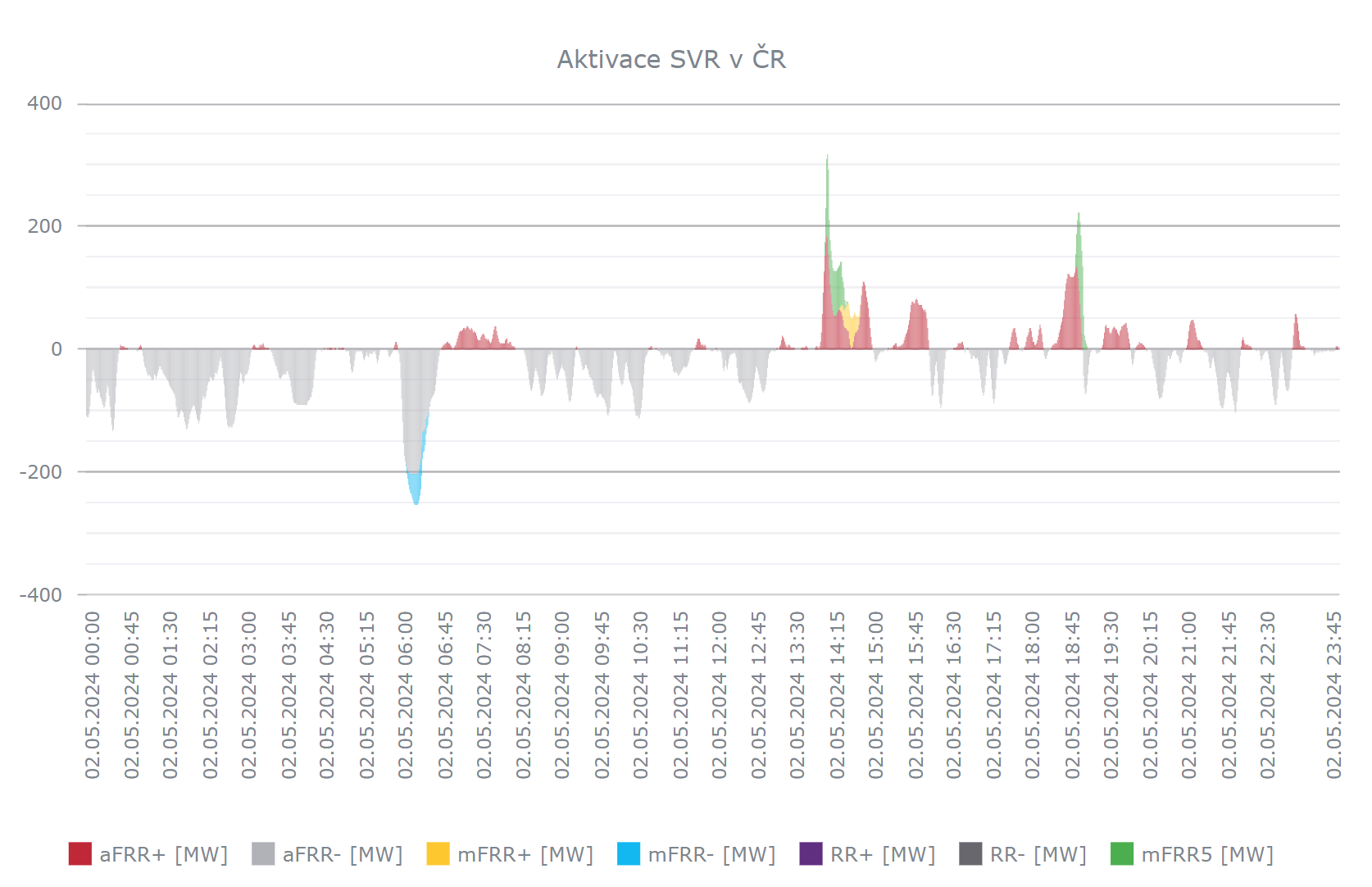
Current data and auction results on CEPS.cz
Aggregation Blocks and the Role of the Aggregator
One source is not always sufficient to cover the required service. Therefore, it is advantageous to combine multiple sources into so-called aggregation blocks. Within a single block, short-term outages or limitations of individual sources can be eliminated. The ČEPS dispatch center only monitors the total output of the block, which is managed by the aggregator.
Technical Requirements for Providers/Aggregators
In addition to registration and contract conclusion with ČEPS, it is crucial to ensure the technical collection of second-by-second data from each device into the so-called Terminal. The Terminal is a server that represents the aggregator to ČEPS, ensures communication and management of the block, and allocates individual outputs.
Previously, the terminal was located separately at each large source. Today, data from dozens or hundreds of devices is usually collected into a single cloud server. The Terminal also ensures data transmission over redundant links to two independent ČEPS dispatch centers.
Mervis – System for Providing Ancillary Services
Energocentrum Plus and its products under the Mervis brand offer a complete solution for power balance and electricity production management. The system can be used as a whole or only selected parts (such as PLC communication, cloud terminal, or visualization).
Among Mervis customers are, for example:
- Nano Energies
- innogy
- C-energy
- Enetiqa
- EnerSpot
- SolarGlobal
- and others
How does it work?
While the aggregator handles the “paperwork” part of the process with ČEPS, Energocentrum Plus assists the aggregator with the technical implementation of the entire system. From connecting individual locations, through cloud hosting, to ensuring connectivity to ČEPS dispatch centers and successfully passing point-to-point tests.
Solution Architecture
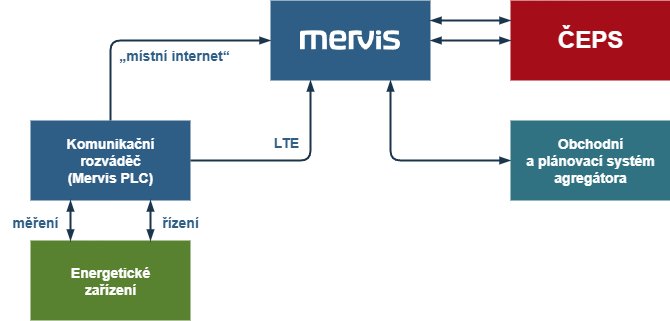
Communication architecture
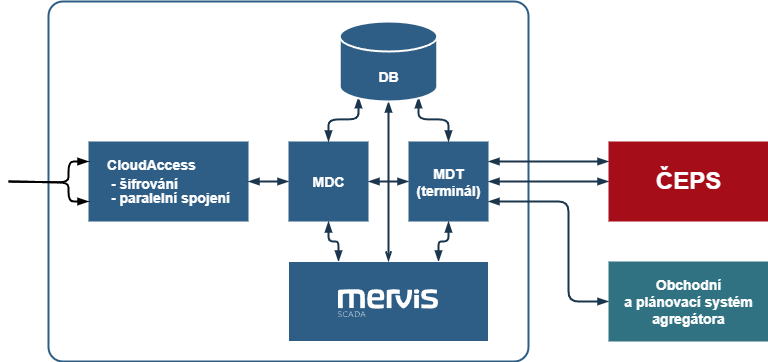
Terminal
Visualization
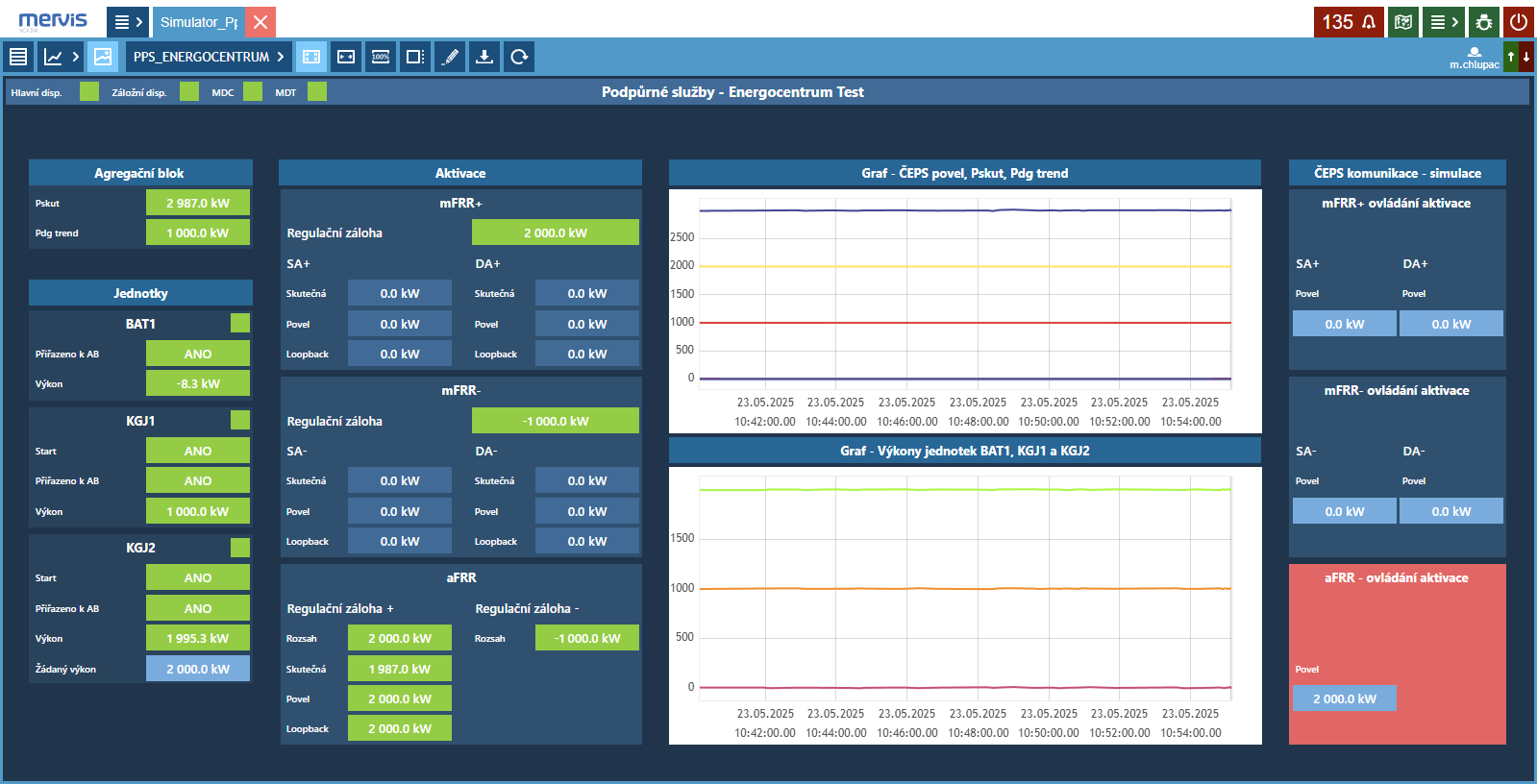
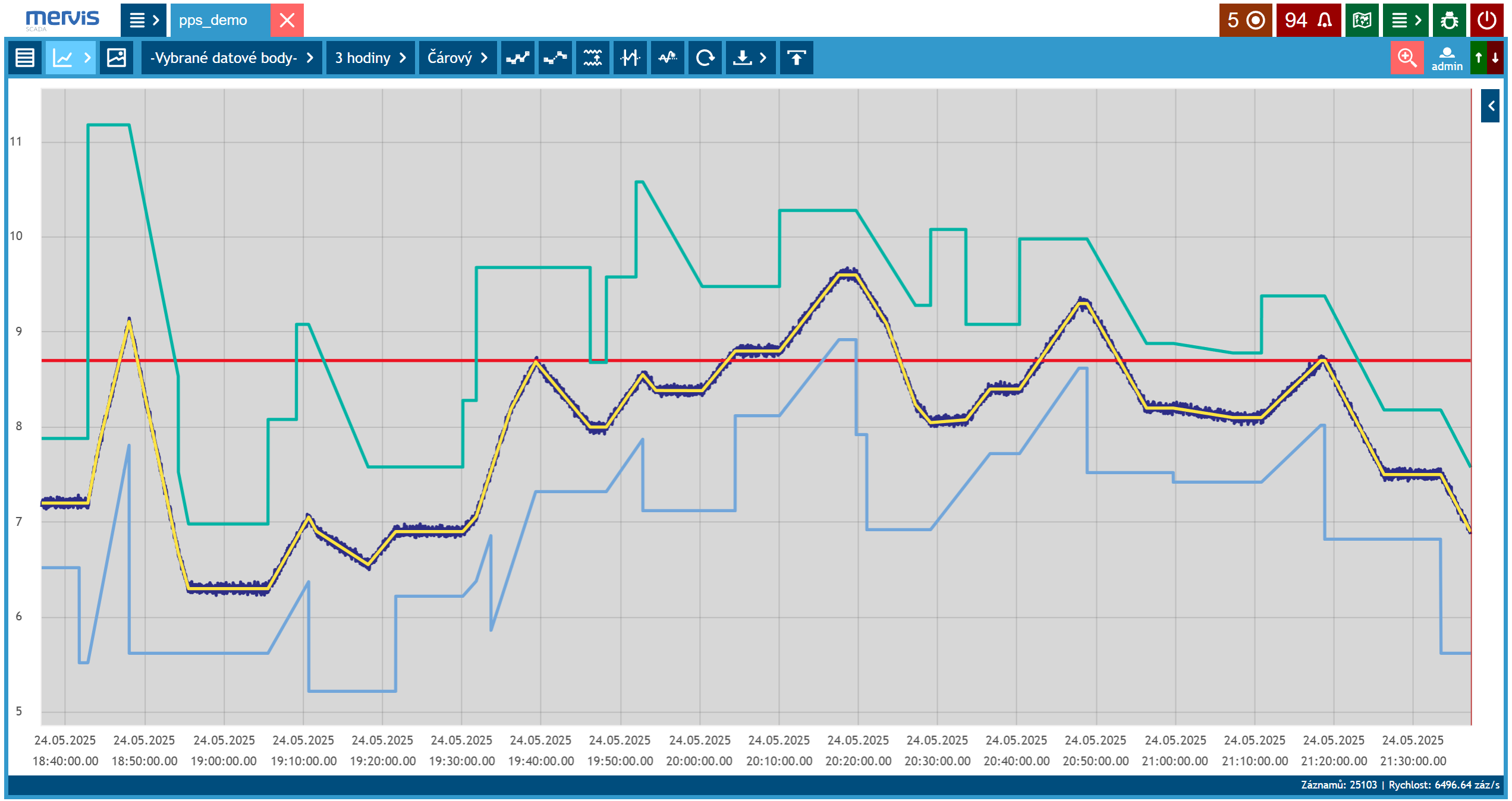
Try the aggregation block simulator at scada.mervis.info.
Login: ppsdemo / ppsdemo
Contact
Energocentrum Plus, s.r.o.
Ing. Martin Chlupáč
martin.chlupac@energocentrum.cz, +420 724 555 346
